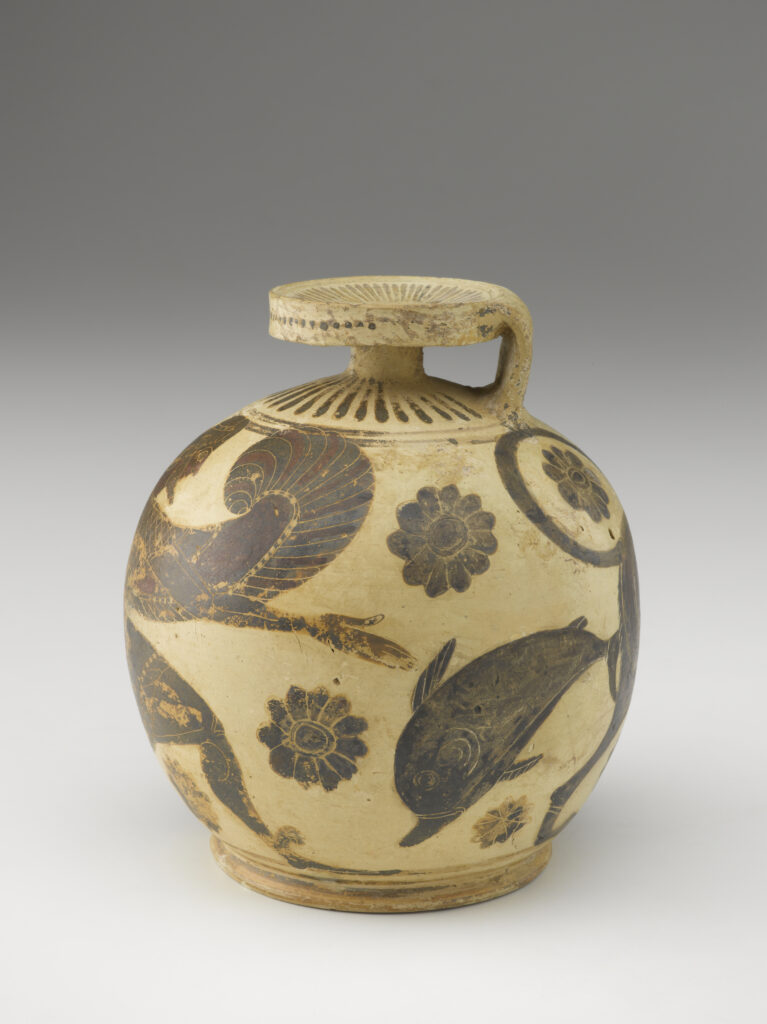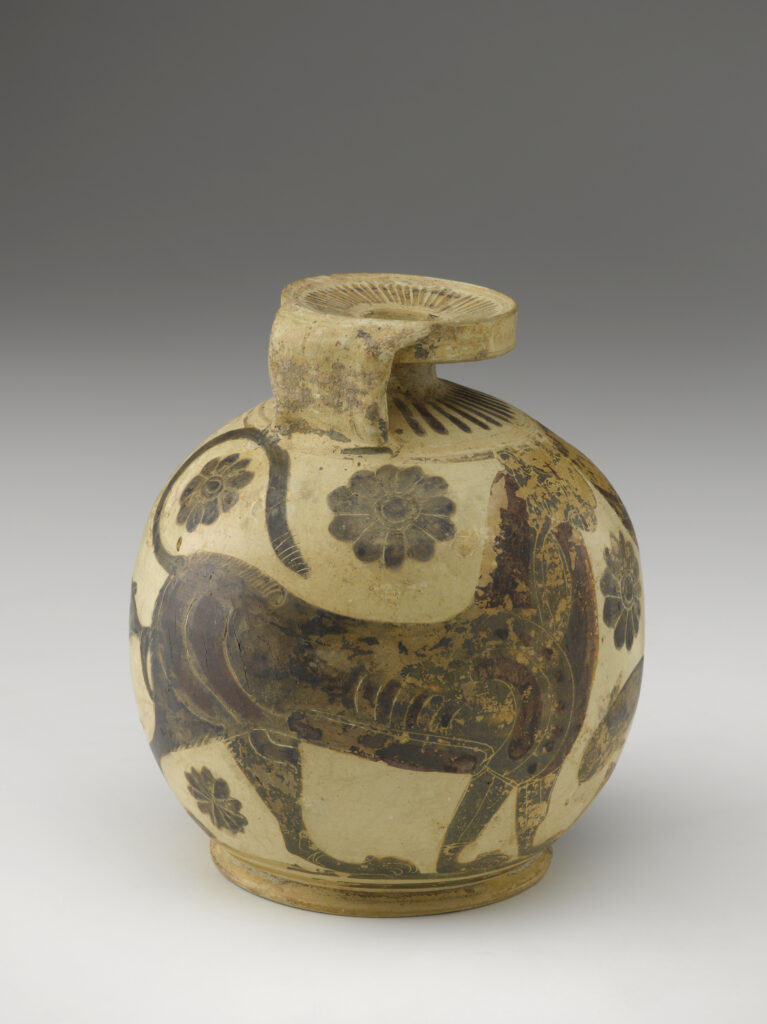Oversized Aryballos (work of art)
Artwork Info
About
Key Ideas
- An aryballos is a bottle or flask with a short neck, a handle, a small opening with a flared lip, and a round body. The globe-shaped body of an aryballos was often decorated with elaborate designs. In ancient Greece, this type of vessel would have been used to hold scented oils or ointments.
- This aryballos is considered to be oversized because it is nearly three times larger than a standard Corinthian vase of this shape. It was not intended to be carried around outside the home.
- This object was made using the black-figure pottery technique. Black-figure pottery is a Greek pottery style. Its name comes from the color of the painted scenes and figures on the ceramic vessels.
- Ancient Greeks used pottery vessels to store, transport, and drink liquids like water or wine. Smaller vessels were used for storing ointments and perfumed oils.
Learn More
This vessel was made in Corinth, a city in south-central Greece. Corinth was once a main hub for trade, but today it is filled with ancient ruins. In the late eighth century BCE, Corinthians learned how to make perfumed olive oil from their contacts in the Near East. The Corinthians bottled the perfumed olive oil in aryballoses (the plural form of aryballos).
An aryballos is a small painted bottle or flask with a pointed or round base. Male athletes in ancient Greece used this type of vessel to take perfumed olive oil with them to the gym. Athletes often oiled their skin before they worked out, and they used olive oil (instead of soap) to clean their bodies afterward. The compact size and design of an aryballos made it easy to carry. A string or strap could be looped through its handle and tied to the owner’s wrist.
Corinthian vases are typically yellowish or beige-colored clay pots with painted animal motifs and floral designs. Floral designs were often used to fill the blank spaces on a vase’s surface. This aryballos was created using the black-figure pottery painting technique. Artisans created black-figure pottery by applying a thick layer of black pigment (made up of potash, iron clay, and vinegar) to a clay pot before they fired it in a kiln. Black-figure pottery was first produced in Corinth around 700 BCE. It was the main decorative style until the red-figure pottery technique was invented around 530 BCE. Ceramic vessels that were commonly made using the black-figure pottery technique include cups, storage jars, and vases. Black-figure pottery often features images from Greek mythology, famous battle scenes, animals, and flowers.
Additional Resources
Resources for Teachers:
- View a similar vessel from the British Museum.
- Watch a video about Greek vase production and black-figure pottery.
- View another painted black-figure pottery vessel at the NCMA.
Resources for Students:
- View a similar vessel at the CU Art Museum.
- View another aryballos from Princeton University Art Museum.



